New Leadership, Taking Big Steps
Striving for sustainability, education, and healthcare, Kaikan’s newest leader brings her people’s challenges and hopes to the national stage


Sunday, May 25, 2025

Striving for sustainability, education, and healthcare, Kaikan’s newest leader brings her people’s challenges and hopes to the national stage


Sunday, May 25, 2025
By Michel Outridge
BATANA oil has been trendy for some time now, and, locally, a few persons have since gone out of their way to import the product directly from its sour ce and retail it here in Guyana despite the costly undertaking.
One such person is Bibi Shanaz Mohamed, a resident of Bendroff, East Bank Essequibo, a mother of one, whose quest to become a small business owner materialised recently.
As a stay-at-home
mother, she wanted to work and had ideas of establishing her very own small business right from home.
She told Pepperpot Magazine that this m onth she managed to successfully launch Bibi’s Natural Glow— 100 per cent organic batana oil—on the local market, and it is currently retailed at three locations.
Mohamed explained that earlier this year, she noticed that her spouse’s hair was thinning and he had an unusually receding hairline. She, too, had
hair issues—breaking and thinning hair that lacked shine and lustre.
She added that she began some research, and the idea of selling it locally was conceptualised after they both used the product for a month and saw marked improvements in both their hair and skin.
The 25-year-old related that her aunt, who used to reside in Honduras, came to visit and brought the batana oil for them to try.
After seeing the benefits for herself, Mohamed decided to enquire about the pos-


sibility of importing the product to retail in Guyana as a small business.
Her relative, who currently lives in the United States of America (USA), assisted her in getting the product to Guyana via shipping.
Mohamed explained that she first bought a gallon of the original batana oil and sourced plastic containers in two sizes from Amazon, which were shipped in.
She then had the labels done at a private company and packaged the product, after which it was launched on shelves in Parika shops and at her home.
Mohamed told Pepperpot Magazine that h er aunt, her spouse, and herself could all testify to the benefits of the original batana oil. It is not fake—it is from the home of the product, Honduras, where it is harvested and processed into its

Striving for sustainability, education, and healthcare, Kaikan’s newest leader brings her people’s challenges and hopes to the national stage
By Shaniya Harding
LAST week marked one of Guyana’s most impactful and captivating national initiatives: the National Toshaos Council Conference. Held annually, this year’s conference brought together approximately 200 Toshaos from every region of Guyana to share common hurdles as well as potential solutions. The event serves as a platform for Indigenous leaders to have their concerns heard by national authorities. Beyond that, the confer ence acts as a space for community leaders to connect, discussing everything from the preservation of traditional practices to challenges in sectors such as health, security, and education.
This year’s conference welcomed many new faces, including younger leaders stepping forward to represent their communities. Among them was Katiuska Rodrigues, the new Toshao of Kaikan Village. In an interview with Pepperpot Magazine, she shared that although her community has made significant strides in recent years, thanks to a growing relationship with the State, her current focus, however, is on educating Kaikan’s next generation. Kaikan may not be widely known, but it is one of the country’s most unique and captivating villages. Nestled along Guyana’s western edge near the Venezuelan border in Region Seven, it is home to a peaceful population of just over 500 residents. Though small, Kaikan boasts a vibrant culture and little-known traditions. One of its defining features is its use of the Akawaio language mixed with Arapuna.
Speaking with Pepperpot Magazine, Toshao Rodrigues described her village as a serene, closely knit community that treasures its customs as
much as its people. “As we all know, Kaikan is a very peaceful community. We have five hundred and two residents currently. Kaikan village, my village, is a very peaceful place, and the people live good together,” she said. This year’s conference marked her first as Toshao—an experience she described as both productive and enriching.
$230 a pound to reach Kaikan, which is very hard on the residents,” Rodrigues explained. The steep cost of travel has created a ripple effect—prices of goods and services i n the village have risen significantly. In response, the community is working with the government to find affordable alternatives to access Kaikan, which is
community. We also serve a neighbouring community and miners in the area. T hey come to Kaikan to seek medical attention,” she shared.
Given its role in providing regional medical support, the village is advocating for improved healthcare infrastructure, particularly the procurement of essential medi -
rain and size of the village present challenges in daily travel for both learners and teachers. To help alleviate this, the village is pushing for a school kitchen. Many hinterland communities have already benefitted from similar initiatives, and Kaikan hopes to join their ranks. According to Rodrigues, the kitchen has been in the works for

Despite its charm, Kaikan faces significant challenges, especially the high cost of living due to its remote location. Situated at one of the farthest ends of the country, transporting goods, services, a nd people is extremely costly. This, according to Toshao Rodrigues, has placed a heavy burden on the community. “But the cost of living is very high. Things there are very expensive because of the plane. The freight that we normally pay is very high to get things in and out of the community. We pay
over 300 kilometres from Georgetown.
Like many rural and riverine communities in Guyana, Kaikan is deeply close-knit. With a population of just over 500, residents live as one extended family—a bond they extend to visitors as well. According to Toshao Rodrigues, the village currently supports a primary school with 92 pupils, 28 nursery-aged children, and a small but dedicated healthcare team. “We have the health post with four community health workers. Kaikan doesn’t only assist residents within the
cal equipment. Rodrigues highlighted the issue: “We need things like a CT scan machine and so on. Because if I got a belly pain, they send me out, a whole medevac has to go in just to bring out the patient because we don’t know what is wrong with them. But if we keep this health post with larger equipment, it wouldn’t be necessary for the medevac to go in to collect patients like that.”
As Kaikan’s population grows, especially among school-aged children, the community has turned its focus to enhancing educational support. The ter-
ble progress using funds from the 2023 and 2024 Low Carbon Development Strategy (LCDS). “From 2023 funds, we had a community policing group with their welding shop. We had the women with their sewing centre. We had agriculture, and then we had PTA, their group, with their boat hires and so on,” she said. “With 2024, we have built a guest house. We have the extension of the women’s sewing group for the catering. Also, we are building a mess hall for this quarter with some of the LCDS funds.”
A passionate and forward-looking leader, Rodrigues believes that this year ’s conference was different from those held in previous years. She felt that toshaos were given more time and space to express their concerns. “This year, I think they’re giving us more space and more time to interact,” she said. “Last year, we didn’t have much time to interact. We were like in a hurry. Toshao was just given like seconds to speak on behalf of the community. But this year, I think they’re giving more chance or more time for Toshaos to speak or to say what are their issues and so on.”
some time, and she hopes that her voice at this year’s conference will turn that vision into reality. The addition of new desks and benches is also high on the community’s education agenda.
Thanks to recent developments from this year’s c onference, Kaikan’s goals appear more attainable than ever. This year m arks the village’s first participation in the Carbon Credit Fund, and Toshao Rodrigues is optimistic. Though plans are still being streamlined, she noted that the community has already made nota -
Still early in her tenure, Rodrigues remains hopeful that ongoing dialogue and targeted investments will drive further development in Kaikan. She believes that by highlighting these matters at the National Toshaos’ Conference, the village will receive the support it needs to strengthen its education and health sectors while expanding economic opportunities. With strategic initiatives already underway and inclusion in national conversations, Kaikan’s voice—and its future—is being shaped by leaders like Rodrigues, who are committed to bridging the gap between the coast and the interior.
How a remote Indigenous community is carving a path forward through leadership, culture, and bold development
By Shaniya Harding
ALL across Guyana, communities, both small and large, are working alongside the country’s leaders to drive development while balancing the preservation of culture. But Indigenous communities are banding together, taking bigger, bolder steps. With the recent National Toshaos Council Confer ence, leaders had the opportunity to share their experiences and bring the concerns of lesser-known communities to the forefront. One such community is Turunbang Settlement, located in Region Seven.
Among the passionate leaders speaking on behalf of her home was Colleen George, Senior Councillor of Turunbang Settlement. Representing a remote village deep within the Upper Cuyuni River, George brought not only the concerns of her people but also the passion and drive to work with Guyana’s leaders to put her community on the map.
Turunbang may not be known to most, but for the families who call it home, it is a peaceful, breathtaking piece of Guyana’s frontier. A culturally rich and diverse community, Turunbang stands as both a guardian of tradition and a settlement striving to meet modern needs. Being nestled close to the border adds a layer of complexity to life there. However, Councillor George describes the community as peaceful, serene, and a hidden gem open to the possibilities of tourism.
“Turunbang is not a big community; we are actually very small, but it
is a very peaceful place. Our community is very beautiful,” she stated. No stranger to leadership, Councillor George has served on her community’s council for more than three years, years that she says have been challenging but fulfilling. Born and raised in Turunbang, Councillor George has seen her community grow and change over the years, with some sectors transforming more than others. Her passion for change, coupled with her love for her community, is what initially pushed her to become a leader.
And although leadership was not her first choice, she now believes it was her calling. Prior to joining Turunbang’s council, Councillor George worked various
jobs in the community before being elected. “I have been Senior Councillor for the past three years. My family belongs to the community, but we have never worked in the council or with the government,” she added. “But I have always been working in a few different places, and then the village elected me as Senior Councillor. I decided to take the responsibility.”
During her tenure, Turunbang has seen progress across various sectors. As a riverine community, Turunbang has focused on developing areas such as agriculture, carpentry, and transportation. That attention and emphasis, coupled with governmental support, have given rise to significant development in recent
years. Highlighting a few of these changes, Councillor George stated, “My community has seen changes, especially in certain areas. For example, we have our carpentry centre, and we have development in agriculture. We now have our village shop. We completed our multipurpose building,” she further added, “We also have transportation because we are in the river area. So we use boats to transport and reach from point A to point B,” she stated.
marcation remain top priorities, bolstering education is next on the c ommunity’s agenda. Reflecting on her time at the conference, she states, “It has been good so far, and I'm glad for this opportunity where

ready to work with her community and the government to develop vital areas.
As a passionate leader, George describes her role as both fulfilling and demanding, expressing the emotional and mental strength required of Indigenous leaders. “Being a leader is not easy, and it’s very challenging, but I love the community and the people,” she stated. As Guyana’s Indigenous communities gain greater access to national conversations and developmental resources, settlements like Turunbang have a renewed sense of optimism and drive to see the tangible benefits of state support.
The development hasn’t come easy, and the community still faces hurdles. Like many other hinterland villages, education is a significant focus for Councillor George. While issues like health, water, electricity, and land de-
we can bring our issues.” She added, “Our main goal right now is education; we want to develop education for the children in the community.”
For Senior Councillor George, education is the next vital step in developing Turunbang to its full potential. “I want to develop education to make a better quality of life in the community,” she added. With major announcements and initiatives expected to begin soon in communities like Turunbang, Councillor Geor ge is
“I feel great about the conference and what I heard coming to our community because it’s going to help a lot, for the residents, for the community, for development,” George said. “On behalf of my community, I want to thank the government for supporting us in our settlement to develop. And also, I want to say, we are with Guyana. The community, the settlement, is with Guyana, and we want to work along,” she added.
As the conference concludes and attention shifts towards action, leaders like Colleen George are anchoring their communities in unity, vision, and progress. Whether through education, he alth, or infrastructure, they are laying the groundwork for a future where frontier villages like Turunbang are no longer remote in opportunity but integral to the nation ’s journey forward.
By Shaniya Harding
CHANGE can happen more rapidly than most people think, and in Guyana, change and transformation are happening faster than ever. One of the best examples of this change is in the Batavia community. Nestled along both banks of the Cuyuni River in Region Seven lies the serene village of Batavia, its name derived fr om a Dutch word meaning “The Ancient District.” Since Pepperpot Magazine visited the community in 2023, the new Toshao of the community, Murphy Gomez, says that Batavia has seen some big changes, and with the closing of the National Toshaos Conference, he says that more change is expected.
Founded by a humble settlement of farmers, hunters, and fishermen, Batavia has grown into a thriving community of over 700 people, larger than the population of some six hundred plus people that called it home just two years ago. Toshao Murphy Gomez, a proud son of the soil, is leading development with a mix of tradition and innovation. In an interview with Pepperpot Magazine at this year ’s National Toshaos Conference, he outlined changes in the community in recent years.
Toshao Gomez stated, “Our community ha s seen change and growth. Our population is now 702.” He stated that the infrastructure which was in the pipeline in 2023 is
now almost completed. Says Toshao Gomez, “We have a primary school, and presently, our school is almost complete. We want to applaud the Ministry of Education and the Government of Guyana for that. That should be opening in September.”
Education has always been a focal point for Batavia. In 2023, then Deputy Toshao Donna Boyal, herself a teacher and village daughter, reflected on the long canoe rides to school across the Cuyuni. Today, while the community has made strides in education, there are still pressing concerns. “One of our main challenges is with our secondary school children,” Gomez explained. “They attend school every day in Bartica and would usually take the boat. They leave home at 6:30 in the morning and return around 4 or 5 in the afternoon. It’s a big challenge.”
While the government is building a new sc hool in the nearby village, it won’t entirely resolve the issue of early departures and late returns. Gomez hopes for a permanent solution that would benefit no t only Batavia but also surrounding villages. “Maybe in the near future, we can get a secondary school, which would benefit all of us within the lower Mazaruni area,” he shared.
De spite these challenges, Batavia has been buzzing with activity and has been taking some innovative steps to develop the community energy situation. Batavia has become one
of Guyana’s most recent communities to make the move to solar energy. The government is i mplementing a major solar energy project to bring reliable electricity to residents. “We ha ve a project going
benefit almost everyone in our village. And also we have the fish pond, we have a farm that is being cleared,” Gomez noted with enthusiasm. One of the sectors of Batavia that continues to grow, however, is ag-
this year’s Presidential Grant, Batavia also acquired a new village boat, a vital resource for a community that relies on the river the way most rely on roads. The 2024 LCDS grant has already facilitat -

New Toshao of Batavia, Murphy Gomez, says that Batavia has seen some big changes, and with the closing of the National Toshaos Conference, he says that more change is expected
on in our village. For example, one of our main projects presently is a solar project that the government and, I think, CNOOC coordinate. This project will
riculture. Currently, the community is investing and working along with government ministries to develop a fish pond and farm.
Using funds from
ed the provision of a school bus, and a school kitchen, and residents are eagerly awaiting the remaining funds to continue infrastructure development. Today, the
village boasts not only educational progress and economic development but also cultural preservation. The women’s craft centre continues to teach traditional craft-making, and the ICT hub, market, and other facilities keep the village connected and self-sustained.
Toshao Gomez is optimistic about the road ahead and believes that events like the National Toshaos Conference g ive Indigenous communities a chance to have their voices heard. And this year, he shared that many of their requests are being accepted immediately. “The c onference is going great,” he further added. “We make our requests, and some of them are being answered right away. The Vice President and ministers are responding, and they assure us that our requests will come to reality very soon.”
Gratitude, however, remains a cornerstone of his message. “I just want to thank the government most of all for working with us. For the past five years, we’ve seen tremendous change in our village. I course forward, it does so with deep roots in culture, a strong sense o f community, and leaders committed to carving out a brighter future. Whether you’re gliding down the Cuyuni in a school boat or enjoying cassava bread and local drinks on Arian Island, Batavia offers a living example of what tradition and transformation can look like, side by side.
By Michel Outridge
ALICIA Hunte-Ben -
jamin is the owner of Square One Solutions. It is a different type of business women hardly venture into— but not for her. It is a career path she chose. It did not come easy. She endured and overcame hurdles and challenges to establish a woman-owned small business from the ground up in a male-dominated field.
Hunte-Benjamin told Pepperpot Magazine that she was the manager of a family-owned business for some time before she branched off to open her own small business about one and a half years ago.
She reported that, with about 17 years of experience in solid waste management, she was ready to take on the challenge of owning her own small business named Square One Solutions, which provides portable toilet rentals, event party bus services, small equipment rentals, and trucking services.
The office is located at Farm, East Bank Demerara, and she has six full-time staff members, along with some temporary workers.
Hunte-Benj amin explained that, as a woman in this kind of business, she has to work twice as hard. As a woman who likes to dress up, she would often have to set that aside, put on her long boots, and get on the ground to see things through.
“Although I know what I am doing, it would seem to some that I can’t do it. If I go somewhere for work, the men would ask, ‘Where is your boss?’ They are looking for a man, and I am often questioned as to whether it is my husband’s business,” she said.
The mother of two added that she knows how to manage her business and what it takes to get things done, but she is often looked down on because she is a woman in a man’s world of work.
Having been married for 15 years, Hunte-Benjamin stated that her business caters t o all events, such as parties and construction, and it has portable washrooms for differently-abled persons with wheelchair access.
She related that, in her business, she wanted to do it right and provide the kind of service that caters for everyone—even those who are physically challenged.
Hunte-Benjamin told Pepperpot Magazine that her husband has his own career but is very supportive of her and her small business.
She said she grew up working with her father, a businessman, and he always instilled in her that whatever she wanted to achieve was possible—she just had to make it happen, and she did, with time.
Hunte-Benjamin noted that her father was in the solid waste management business providing commercial

restroom rental services, and she could never picture herself working for others. She had to convince herself she could do it.
“I have a business that caters for all, and it is a service with a difference. It is the experience, and I believe this
is what keeps my small business operational,” she said.
Hunte-Benjamin added that she saw the need for this kind of service in Guyana, and she went for it. It is a job that has no days off, but she is all up for the challenge—being a
mother and managing her own business.
She stated that she is not the kind of person to sit back idly. She is always thinking of new ventures and ideas to improve her business.
As an overthinker, it keeps her motivated and focused.
The owner of Square One Solutions explained that she benefitted from training geared towards empowering women in business via the Accelerate He r project through the Centre for Local Business Development. That training provided the boost of confidence she needed to be successful.
Hunte-Benj amin pointed out that it was a good experience being in a room with other women who own businesses, and it transformed her into a role model—from wanting to have a business to building it from the ground up.
She said she has a motto: “I am bigger than the person I think I am,” and that kept her going regardless of the challenges. It was often repeated to her by her father, her motivator.
Hunte-Benjamin added that from an early age, her father made her believe she could do anything she wanted to. And with the training she received, that was it.
She revealed that being a woman in the type of business she is in is not for the weak. There are challenges, but she goes back to the drawing board to make it work—to make it better than before.
As a self-starter and the kind of woman who doesn’t give up easily, Hunte-Benjamin is of the opinion that a little encouragement and support goes a long way for a woman-owned business.
FROM
PAGE II
raw form for use.
The unrefined raw batana oil comes in two sizes: two ounces for $4,000 and four ounces for $7,000. Mohamed said this is due to the cost of sourcing, importation, labelling, and packaging of the product.
“I am not involved in anything illegal, like mixing up a set of products and oils to make it look like batana oil—no. This is the real product from Honduras and its quality speaks for itself. So when you buy this product from me, you are getting the original, the real batana oil,” she said.
According to Mohamed, who lives in one of the last villages along the Hubu Road, located about 30 miles from Parika, the batana oil is retailed at a studio near County Pharmacy, Parika Stelling Road, and also at a Butcher Street salon, just past Rhonda’s Restaurant.
She disclosed that she also uses the bata-
na oil on her skin as a daily moisturiser, along with other oils, for the hydration she needs as a person with dry skin—and her skin has never looked better or healthier.
The same can be said for her hair. She has seen its transformation in weeks, and in a month, her hair texture became healthier and fuller.
Mohamed reported that due to the cost of t he entire process of getting the product on the shelves—and because it is the original—she cannot sell it for less, or she will incur a huge loss.
She disclosed that she will also be launching batana oil shampoo, conditioner, and hair oil soon and aims to open her very own shop at home.
Mohamed can be contacted on mobile number 680-6052 by persons who are interested in buying the product.
BATANA OIL AND ITS SOURCE
Batana oil is a natural oil derived from the nuts of the American palm tree, primarily found in Central and South America—especially in Honduras.
It’s also known as ojon oil. Indigenous communities in Honduras have used it for centuries for hair and scalp health, considering it a "miracle oil" for promoting hair growth.
Batana oil is rich in fatty acids, antioxidants, and vitamins, making it a popular choice for hair nourishment and moisture.
One of batana oil’s most notable benefits is its ability to penetrate the hair shaft and strengthen strands from within. The oil’s molecular structure allows it to work effectively on multiple hair types, from fine to coarse textures. Regular use may help:
• Reduce breakage and split ends

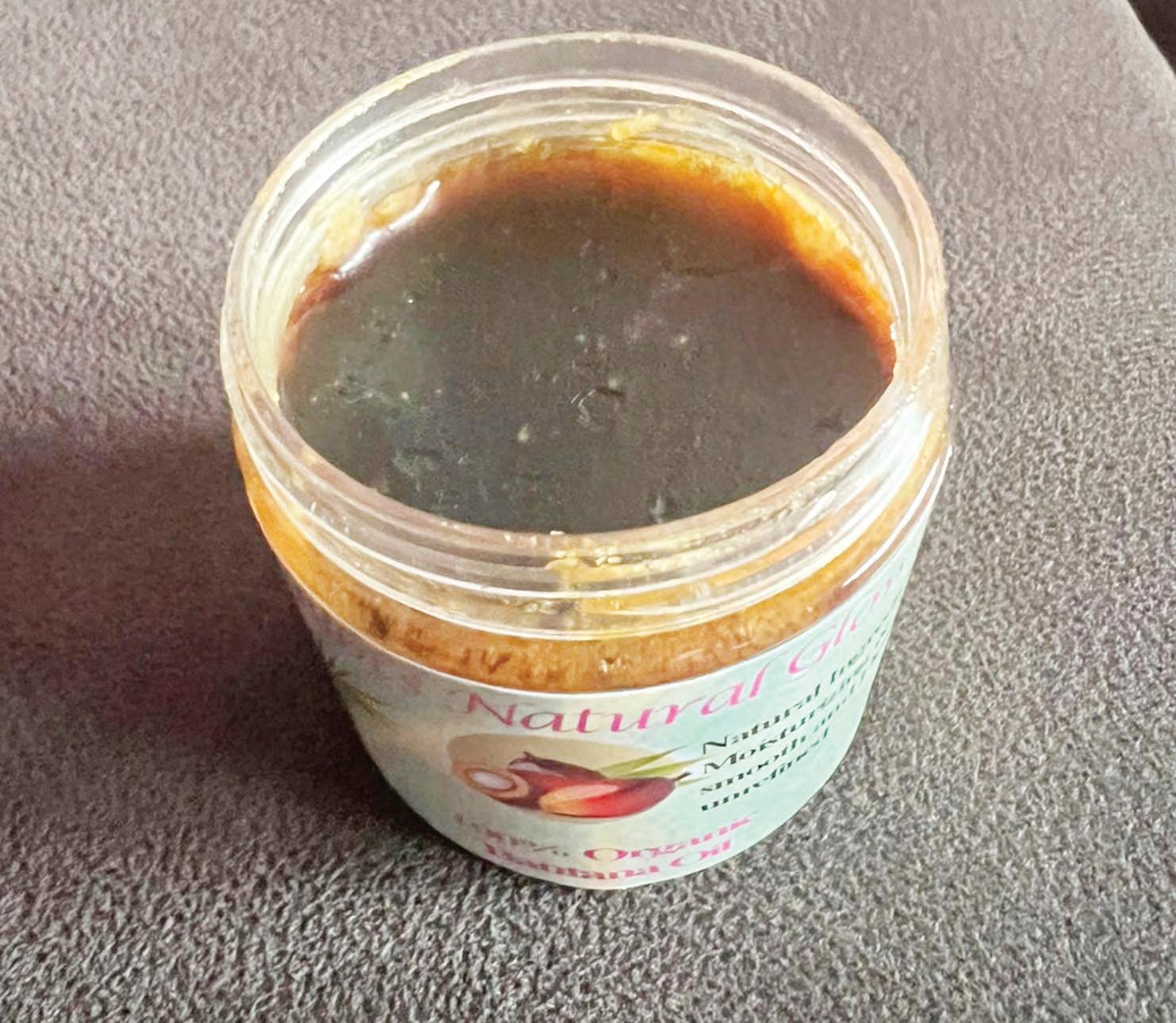


THOUGH there were always areas where local products could not compete, there were other realms that inspired. For example, most of the local bands appeased their audiences even while competing in overseas competitions. The first CARIFESTA, the voice of the late Pamela Maynard, who outdid the Galettes in 1970.
I want to congratulate Francis Quamina Farrier for connecting me with his page LEGENDS OF GUYANA PAST AND PRESENT. It's awesome. This page compels us to wake up from the complex. We have done it before and can do it again
legitimately and with the same originality. Talent has never been a problem. I met Sandra Todd on Robb Street about a year ago and asked her about celebrating her father, the late founder of SID & the Slickers. She informed me that it would have to be a family thing. I agreed. But she did surprise me when she informed me that her dad was a self-taught musician. Yep, wow! There’s no country that ignores its talented people like Guyana. Before the 1940s–60s, there was no worldwide music industry. When it emerged, it changed the mood of generations in
segregated places like the then USA. It brought people together, as well as widened the appreciation for different types of music, accommodating new and cross-over talents. One of the most popular songs I inherited as I grew up in the 1970s was Jackie Wilson’s “The Night” (1960), which none of us knew then as a classical piece. It brought many new fans back to the classics publicly, though he was not the pop star that ventured into the perceived sacred world of opera music, which we considered a bourgeois sound in a different language. Then, if you didn’t sing calypso, Rocksteady, Sam Cooke, or
Bobby Darin, “yuh wasn’t ready.”
We have got to step up our act with respect to getting talent discussions and advocacy in the areas of assembling creative platforms that can inhale both original and licensed music and drama. It will cost money, but it will open employment doors that don’t close easily. Everything took form in the ’70s for my generation, including Earth, Wind & Fire, and much more.
Miriam Makeba broke ground with a new array of music—inspiring! The phenomenon of her day was the fact that this was a voice with new melodies, not bound to
a band, that inspired a generation and possibly inspired the then golden girl Abilo "Volder Caesar" of Yoruba Singers, among many others.
What I presume was the case for many local talents: the business of the music world—much like other realms of creative and inventive expression—required rules and awareness of its conduct. This will indeed challenge the surge of its expectations and gloried rewards.
One of the levels of initiation that GT talent missed was the business of the arts. It was missed because most authorities snubbed the vacuum that their talents required for sustenance. It was simple: no song or creative piece, as I tell young people—especially my children—on the internet is there on its own. Someone put it there, so someone owns it. Likewise, music.
The other thing that I’m aware of is this: if a popular artiste with clout asks to do our song, take his offer up. A musician from Linden, I think, refused Johnny Mathis, who wanted to do his song—and he jested about it and lost a chance. I think he was from Linden. Everything requires your input and knowledge to keep the pot boiling. Stay strong until.



RENOWNED environmental scientist, Jo han Rockström, once described biodiversity as the lifeline that makes ecosystems more resilient—vital for the stability of societies. Destroying it, he warned, is like setting fire to our own lifeboat.
Understanding Biodiversity’s Role in Our Lives
Biodiversity is the
full variety of life on Earth—animals, plants, fungi, microbes, and the ecosystems they create. It’s not just about exotic species in remote jungles. It’s the foundation of healthy, functioning ecosystems that provide essential services to humans.
These services, known as ecosystem services, include pollination of crops by bees and insects, clean water


from forest and wetland filtration, fertile soil, and climate regulation. Did you know that about 75% of global food crops rely on pollinators? Forests—from
driving species to extinction at an alarming rate. As ecosystems break down, so do the services they provide— leading to food shortages, water scarcity, increased natural disasters, and the spread of disease.
Gl obal Treaties Working to Protect Nature
Recognising these threats, the international community has established key agreements to conserve biodiversity. Guyana is a committed participant in several of these activities, which help to both

t he Amazon to Guyana’s mangroves—store carbon and help slow climate change.
But these life-supporting systems are under severe strain. Deforestation, pollution, overfishing, and the accelerating effects of climate change are
protect the environment and improve lives. Each treaty addresses a different piece of the biodiversity puzzle.
• Ramsar Convention on Wetlands (1971)
Once seen as unproductive land, wetlands

THE period of adolescence can be exciting and confusing all at the same time. As we enter into our teenage years, we encounter a whole new spectrum of emotions. Every experience and every conversation that we have is intensified with a new layer of meanings and feelings. While this emotional development can be quite thrilling, it may also feel a little isolating. It is easy to share our thoughts, but it can feel quite impossible to describe our emotions to someone else, especially if we are experiencing them for the first time. However, we do gradually grow up, and we learn to manage our emotions and connect with each other in a healthy way.
Now, imagine that this entire process of discovering new emotions and relating to each other was done within
the tiny social limits of your own home or your room. Imagine that an entire generation was made to experience vital parts of their emotional growth without being allowed to socialise. What would the result be?
The result may perhaps be something quite similar to Gen Z.
The pandemic that we recently experienced caused many changes in the world, some of which were positive, while most were negative.
Some of the footprints that the pandemic left are still quite visible in different aspects of the world today.
One such very significant footprint lies in the social and emotional connections of our younger generations. It seems as if Gen Z is perpetually stuck in a state of social distancing when it comes to sharing emotions.
While it is easy to label the generation as being apathetic and unempathetic, there may be deeper reasons for the way it behaves. Perhaps because they were not given an outlet to learn how to express their emotions during a crucial part of their growth, they stopped trying to express them at all.
On the other hand, they may have also begun to rely on social media and the internet to express their emotions to the point that they cannot communicate effectively in a face-to-face setting. Today, we may encounter several younger individuals who are quiet or shy during a face-toface conversation but who are quite expressive and extroverted while communicating through social media. In fact, if given an option, they may prefer to communicate solely through their devices

simply because it was the only space that they were able to use while they were developing their social skills.
These changes in the younger generation are not entirely negative. The ability to communicate and connect through online platforms can be quite beneficial in the current modern era. However, being able to communicate online while not being able to do so in the physical world can pose an actual problem in the way we form relationships and in the way we express feelings of compassion or empathy. After all, how can our generation inherit the world if it is not even capable of connecting with the people who live in it?
Skills like listening to each other and communicating with compassion may seem natural. They are, however, learned with practice, just like any other skill. Although it may seem like social distancing has made irreversible dents in the process of growth in the younger generations, it was truly only a small hurdle. If we are able to help the younger generation regain the skills they may have lost or failed to develop, we may have a generation that is extremely efficient in communicating and showing empathy not just in the physical part of our world, but also in the digital side. If all of our burdens were meant to be carried alone, they would not be so heavy. If all of our joys were meant to be experienced alone, they would not be so deep. Human beings are meant to be connected with each other. In the same way that we share information and news, we are also meant to share love, joy and sorrows. We have already learned to connect with people digitally; now it is time for us to relearn this skill in the physical part of the world. Sometimes, the warmth of a genuine smile and the affection in a real hug are simply too beautiful to be replicated throu gh any form of technology.


ONCE upon a time, fifty-nine years ago, we became masters of our own destinies in a land that was once a gem in the British crown. We have come a long way from then to now, with greater possibilities for this nation to continue to rise magnificently. If one had said decades ago that this is where we would be today, it would have seemed like a fairytale.
But here we are on the threshold of becoming the richest small nation in this hemisphere.
And as I stood in my garden on this cool morning, breathing in the fresh air blowing in from the Atlantic and listening to the twittering birds on the flowering trees, I said to myself, “It’s a blessing being here.”
This was home, for me, in the beautiful tropical country of Guyana, a country that has come a long way from independence as it charted its own destiny through challenges, stumbles and hurdles sometimes too high to cross. It caused people to begin migrating in search of a better life, but I did not leave—I stayed.
I stayed through the hard times. I stayed, though jobs were hard to get when there was not enough food on the table. I stayed, although I did not see a bright future in my pursuit of a career. North America, the land of dreams and opportunities, beckoned, and so began the gradual exodus, for a poor, broken country had not much to offer.
I had paintbrushes in my hand but could not see
the vibrant colours in my vision, so the canvas remained blank. Yet something held me back from taking that life-changing journey.
What was it?
Was it such a deep love for this place called home?
History has taught us many interesting stories of our past—of the ships that brought our ancestors to these shores for plantation life. The blood, sweat and tears as they worked with unbroken resolve to build the foundation we inherited in this green land that became home. Yet, now, should we leave for a foreign land?
I wondered about the motherland, with tears in her eyes and worn fabric on her body, needing her sons and daughters to hold her hands so one day she could smile again and be dressed in fine clothes.


As a young girl, my mind had not encompassed everything about the country’s history and geographical landscapes, so I read as many books and magazines as I could get my hands on, and I discovered many interesting facts, places and stories. It seemed that this country was a hidden paradise the world did not know of—with astounding mountain ranges, endless savannahs, pristine r ainforest, majestic waterfalls and exotic flora and fauna.
It was a country to love and be proud of, but its weak economy could not hold back those who wanted a better life and the young intellectuals with big dreams.
But nothing stays the same, for time wrought changes.
I stayed and ventured into a small business to become self-independent. The business did well de-
spite a shortage of stocks to sell, and I managed to assist some poor people in the neighbourhood and financed a few children’s education. It was quite challenging to survive in those tough times, and people continued to leave. I lost many close friends and some family to migration, and my heart ached sometimes when I thought of the good times we spent together. But life goes on for all it’s worth.
Decades passed as the country started to make gradual steps in reshaping its destiny—for hopes created new days, and belief set the tone and pace for a better tomorrow. There was a long way to go, but a country with great potential was making progress towards a promising future. Many who had left and came back to visit were surprised by the development—some making welcome investments and others charitable donations to the less fortunate.
The mother now had a smile on her face, a sparkle in her eyes—no more tears.
Then came oil. And began the rapid rise of a nation beyond all expectations. Who could have thought decades ago that a fairytale story could have become a reality?
I always had love for this country that’s home, but now my heart is filled with happiness, and I can see all the vibrant colours to paint on my canvas. My first portrait would be of the motherland in her unique beauty—for now, she glows with a beautiful smile and is dressed in rich silk.
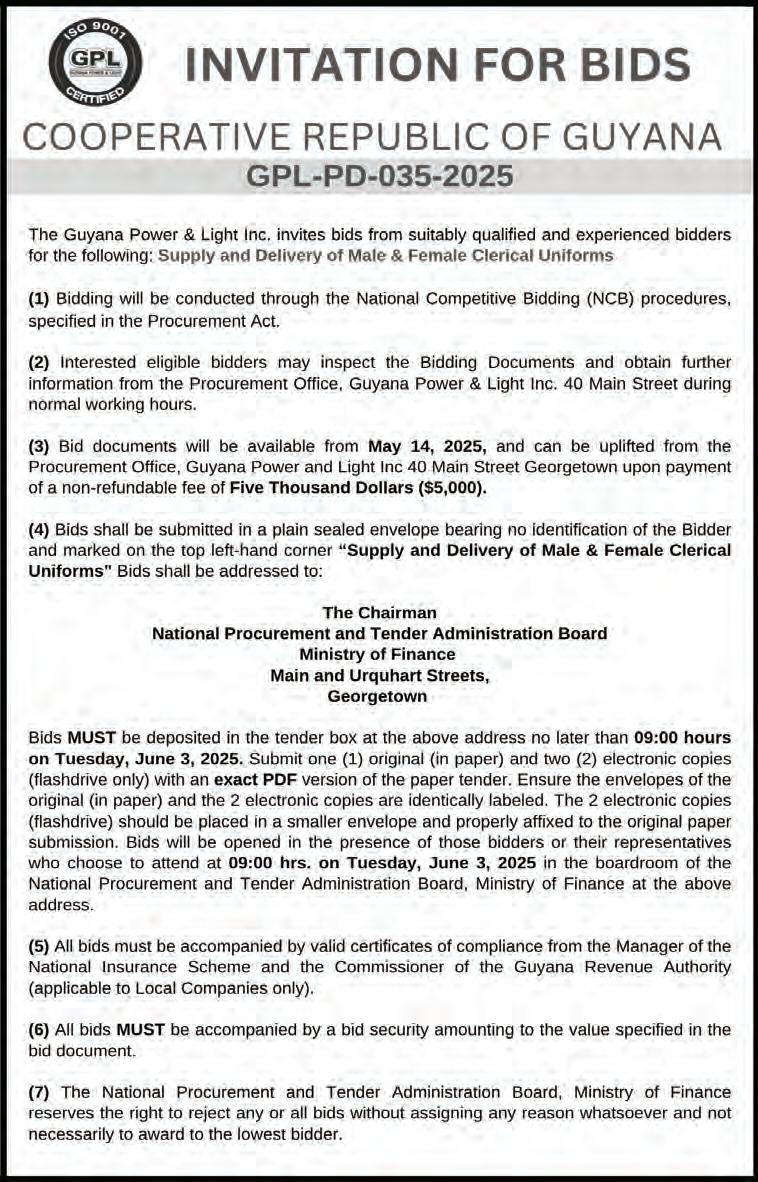



FROM PAGE X
are now celebrated as biodiversity hotspots and natural safeguards. They clean water, buffer floods, and support countless species.
The Ramsar Convention is the first international treaty focused on a single ecosystem— wetlands. Countries commit to the “wise use” of these areas and designate significant sites as Wetlands of International Importance.
Guyana’ s North Rupununi wetlands in Region 9 floodplains support fish, birds, giant otters, and Indigenous communities. Protecting them is also about preserving cultural heritage and strengthening community resilience.
• CITES: The Wildlife Trade Treaty (1973)
Every year, millions of wild species are traded globally. Without regulation, this trade threatens biodiversity and the survival of species.
The Guyana Wildlife Conservation and Management Commission is the focal point for the Convention on International Trade in Endangered Species of Wild Fauna and Flora (CITES). The Commission monitors and regulates wildlife trade through a permit s ys -
tem to ensure it remains l egal and sustainable.
Exports of parrots, turtles, and snakes, for instance, are closely managed to ensure populations remain healthy.
• C onvention on Biological Diversity (CBD) (1992)
Adopted at the Rio Earth Summit, the CBD is the most comprehensive global treaty on biodiversity. It has three core goals:
1. Conserving biodiversity
2 Using biological resources sustainably
3. Ensuring fair sharing of benefits from genetic resources
Guyana has embraced the CBD by developing a National Biodiversity Strategy and Action Plan, expanding protected areas, and weaving biodiversity goals into national planning.
The CBD also supports Guyana’s Low C arbon Development Strategy (LCDS), which connects forest conservation with economic de velopment. By preserving our rainforests, we reduce carbon emissions, protect biodiversity, and earn income t hrough carbon credit agreements—such as those with Norway and Hess Corporation.
With its rich ecosystems and low deforesta-

tion rates, Guyana is well-placed to help lead this global effort.
Looking Forward: A Shared Responsibility
Biodiversity isn't just about plants and animals—it's about people. It supports our water, food, health, and economy. In Guyana, with its lush forests, powerful rivers, and vibrant cultures, biodiversity is a national treasure with global value.
But that treasure needs protection. Governments, businesses, Indigenous c ommunities, and individuals all have a role to play By following environmental rules, supporting conservation ef forts, and recognising the value of nature in our daily lives, we help safeguard the lifeboat we all depend on.
Biodiversity is a necessity. The time to act is now.



MAY and June encompass Mother’s and Father’s Day, and for the lucky ones, we still get to celebrate it without grief.
I really do feel it for parents and how society, as well as your own guilt (probably from the shame from society), makes you feel as though you need to limit emotional expression—where reclaiming your time and mental space is selfish or bad parenting. This is crucial not only for your own well-being but for the well-being of your children.
I imagine that one of the biggest barriers to self-care in parenthood is guilt— where that may stem from would be different for ev-
eryone. You are bombarded with messages that if you aren’t constantly sacrificing, you’re doing it wrong.
But guilt is not proof that you’re a good parent; it’s just a sign that you’re internalising unhealthy expectations. It means that society has trained you to believe your needs are less important than everyone else’s.
Parenting is often described as the ultimate act of selflessness—sacrificing your time, your sleep, your social life, and very often your identity to raise the next generation. From the moment a child is born, society expects parents to give endlessly, and any deviation from this—any desire for solitude, space,
or personal fulfilment—is viewed with suspicion. But here’s the truth we rarely say out loud: parents need to be more selfish. Not in the harmful, neglectful way that society fears but in the deeply necessary, life-affirming way that says, “I matter too.” Bearing the weight of invisible expectations, parental selfishness is simply self-preservation. The moment you become a parent, you step into a role riddled with unspoken rules. You’re supposed to be infinitely patient, eternally giving, and immune to burnout. You’re told to cherish every moment, even the ones that leave you sobbing on the bathroom floor or hiding for a sliver
of silence. There’s no room in this narrative for honesty—no space to say, “I am completely overwhelmed,” or even, “I don’t really like my kids today.”
But those feelings are not rare; they’re human. Parenthood is hard, and love doesn’t always encompass joy. Sometimes, love is dragging yourself out of bed on two hours of sleep. Sometimes it’s setting a boundary. And sometimes, it’s stepping away from your child to protect your sanity—because you’re about to break.
Another radical truth: It’s okay to feel what you feel. Feeling angry, undervalued, resentful, or disconnected as a parent is in-

herently normal. What isn’t normal—or healthy—is the pressure to pretend otherwise. When we suppress our emotions, we don’t become better parents—we become more brittle, more reactive, more disconnected from ourselves and, ironically, from our children.
For everyone’s benefit, we need to normalise the full range of parental emotion, including the darker shades. Parents must be allowed to say, “This is too much.” They should be able to admit, without fear of judgement, that a personal break is needed. This honesty doesn’t make someone a bad parent. It makes them real—and real parents raise real, emotionally intelligent children.
I’d like to think that everyone is familiar with “We cannot pour from an empty cup”; that if you run yourself into the ground trying to be the perfect parent, what you end up giving your children isn’t your best—it’s your leftover exhaustion, irritability, and emotional depletion. But when you prioritise yourself—your rest, your joy, your growth—you recharge your capacity to parent with patience and presence. Taking time for yourself is not neglect; it’s a strategy on how to show up as a whole person rather than a hollow one.
Before any disagreement, this doesn’t mean abandoning responsibility or ignoring your child’s needs. It means integrating your needs alongside theirs. It means building a parenting culture that includes your humanity rather than erasing it.
Self-care for parents doesn’t have to mean long getaways but small, simple steps such as saying no to activities that you do not have the capacity for, spending time doing hobbies that encourage your own identity, and time with other people who remind you of who exactly you used to be—before you started to simply identify yourself as a role. Start small but remain consistent. Taking
a measly ten minutes a day for yourself, without multitasking for anyone else, creates long-term habits of self-recognition. Schedule this time like unmissable appointments; you do not need to earn rest. Take a few minutes when you feel triggered—every situation does not warrant an immediate response. This models emotional regulation and secure attachment for your children, not only for your own relationship with them but for any future relationships they have.
Another radical truth is that modelling self-care, self-respect, and boundaries is one of the greatest gifts you can give your children. When your kids see you taking care of yourself, they learn that it’s okay to take care of themselves, too. They learn that emotional honesty, balance, and boundaries are not weaknesses but character necessities. In return, they are parented with more patience, empathy and presence.
It’s time to shift the narrative. We need to stop glorifying the exhausted parent and start honouring the balanced one. We need to build a society that makes space for parental needs— through supportive policies, more open conversations, and less judgement. Let’s start praising parents not just for the meals they cook or the tantrums they soothe but for the boundaries they set, the therapy they attend, the naps they take, and the friendships they nurture.
Let’s applaud them for saying, “I need a break,” and then actually taking one. Let’s make it normal to ask for help, to drop the ball sometimes, not to have all the answers—and still be worthy of love and respect.
The obvious truth is that children do not need perfect parents. They need healthily present ones—and taking care of yourself is how you take care of them. The better you feel, the better you parent, and this is done through self-preservation, not self-depletion.

ALMOST all the standard dental procedures require numbing the area where the work is being performed. The use of local anaesthetic to achieve this is obvious since the practice of dentistry must never be a painful experience for the patient. The prick of the needle should never be anticipated as being uncomfortable or frightening since this preparatory measure is very innocuous.
I have never known anyone to suffer any adverse effects from local anaesthetic. It is used mainly to numb the area where a tooth is being extracted. It is estimated that over 750,000 dental capsules of anaesthetic are administered yearly in Guyana with relative safety and with possibly few complications resulting. However, like all drugs, the use of local anaesthetics, commonly referred to as “cocaine”, is not without hazard, and we must all be aware of the possibility of untoward reactions.
Patients need to inform their dentist of any history of previous anaesthetic experiences and whether they have shown any unusual reaction to drugs or aller gies. The dentist should know any specific condition which may require support or treatment, and any disease for which the patient is or has been under the care of a physician, and
the type of treatment, particularly drugs, currently being prescribed.
Mo st reactions occurring after the injection are potentiated by the anxiety that accompanies the dental appointment, and stress is the major problem to be avoided. Other conditions that may precipitate reaction to local anaesthetic are the following:
1 Low blood sugar levels resulting from fasting before the dental appointment. This is probably the foremost factor in fainting, so the patient must have had a regular meal. People who skip breakfast are prime candidates for fainting.
2. Extremes in temperature. Heat exhaustion will exacerbate reactions.
3. Any debilitating disease. Disease is a prime agent that reduces the ability to respond to stress.
4. Pregnancy. This patient is sensitised, much like the allergic type. She has an increased blood level of steroids and needs careful handling.
Studies show that two to three out of every hundred members of the public w ill fall into a category of problem management cases. Most of those individuals have special requirements, and I will examine some of them.
Cardiovascular (heart and blood vessels) diseases. These patients will probably
be on special medications such as Reserpine or Serpasil, digitalis derivatives (Digoxin), diuretics (Lasix), and tranquillisers (Valium). All these drugs may interact with the anaesthetic agent used.
Respiratory diseases. These may include emphysema and asthma. These conditions limit the oxygenation mechanism. Since fear results in increased respiration, dental chair
apprehension may cause a deficit.
Allergic diseases. This patient may have a history of hay fever, asthma, angioedema, contact dermatitis (“mad blood”), etc. There will often be a familial history of sensitivity. Atopic types a re very sensitive to offending antigens and may develop severe anaphylaxis and die from the injection of small amounts of the
allergen (continued in the anaesthetic).
Blood dyscrasias and haemorrhagic diseases. Many people are taking anticoagulant therapy and do not know. Patients frequently take tablets prescribed by their doctors w ithout knowing the names and purpose of the medicine. When it takes more than ten minutes for a wound to stop bleeding, or if a woman menstruates
more than six days, there is a possibility of the person having a coagulation problem.
Finally, individuals receiving steroid the rapy do not respond well to stress. Those being tr eated for hyperthyroidism may have to be sedated. Uncontrolled diabetics should never have dental treatment. Healing and postoperative infections are a problem here.
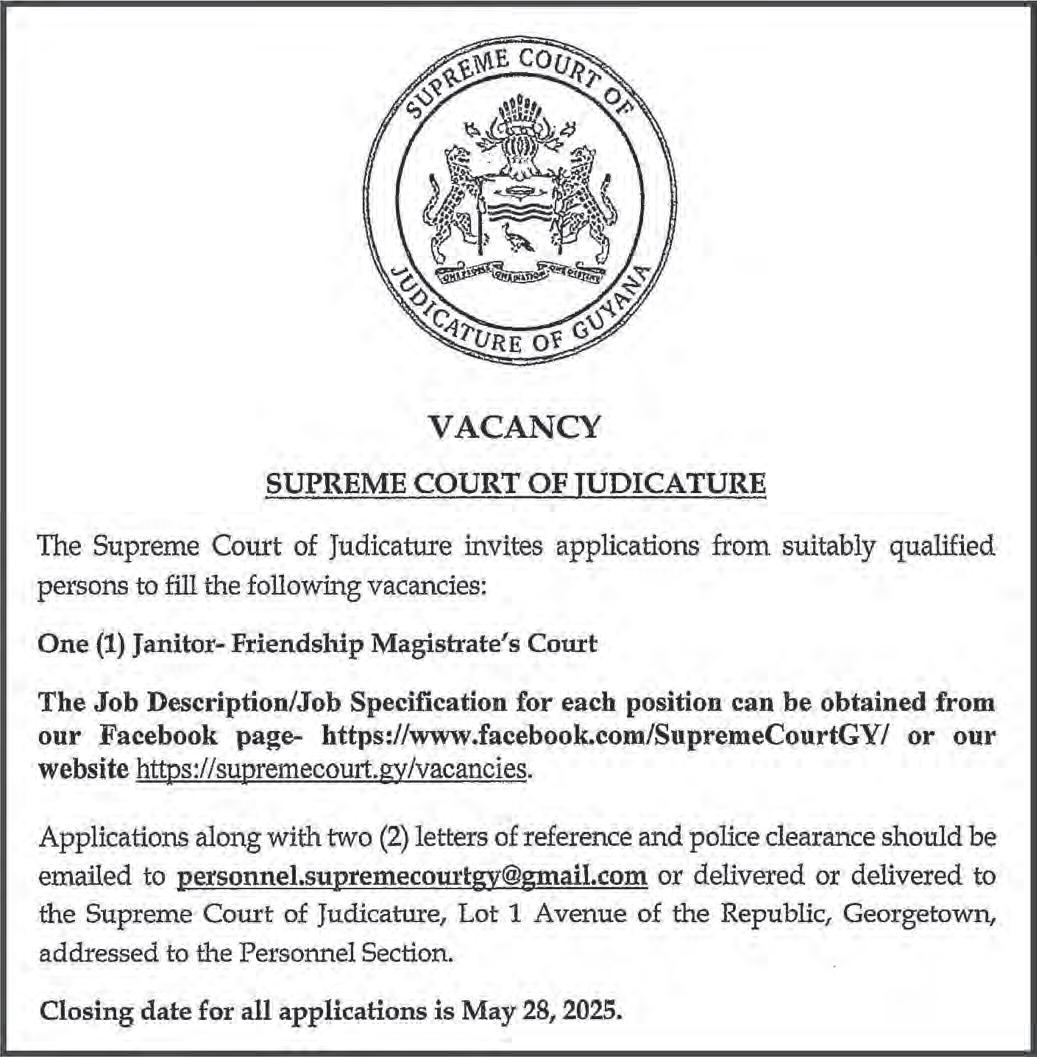


Some people see work as a stressful situation, while others see that there are many joys in working. A question to you before you read this book: “How do you feel about working?”
Building friendships is very important for all employees. If you are stressed, then you might need a shoulder to lean on. Many employees are looking for someone with whom they can have a healthy working interaction on a regular basis. You can be the person your co-workers would like to have around them. If you build friendships, you might be helping other people, and they, in turn, may be there for you when you need them.
While you are enjoying work, you may recognise that you have an opportunity to find a companion there. Some people have nice personalities and good intentions and are dedicated workers. These qualities are attractive and may result in other people seeing them and wanting to be their lifelong partner.
Even the best individuals need some counselling from time to time. People are challenged on a regular basis by so many issues, and sometimes, the organisation provides an opportunity for counselling. It is good for everyone, and people must accept it whenever it is available so that they can become more productive. You should be able to enjoy work, as you have an opportunity to build character. You can build your brand with your organisation so that many people will remember the good things that you have done. Even when you have retired, some people may still seek your knowledge and skills because of the brand that you have established.
Make the best use of your working life, and it will reward you greatly.
Section B: Employers’ Assistance
WORKING with some organisations is so rewarding. If you must retire or change locations, you may feel hurt to leave because of
the opportunities that you have received while working with that employer. Some employers are deliberate in providing you with many opportunities. Some of the opportunities that they will give you come once in a lifetime. Sometimes, you get to go places and meet people that you have never thought about. Working is good! Enjoy your working life and help others to enjoy theirs as well.
When you are working, you may have some opportunities to travel both locally and overseas to conduct activities on the organisation’s behalf. Whatever the travelling opportunities are, you must enjoy them, since the organisation felt that you were a candidate they could entrust with certain responsibilities. Be an ambassador for the organisation wherever you go and when you conduct activities on its behalf.
As you work, you may be entitled to paid vacation. This is an option that is only available to those who are working. If you are at home, then you may have to find your own money when taking a vacation. Employees who work for formal organisations will receive medical benefits. Some of the benefits may be extended to their loved ones and extended family members.
After working hard for many years, you may be entitled to a pension. This benefit is available to people after they finish working, that is, when they attain retirement age. Enjoy your pension, which you so deserve after contributing so much to the organisation. While you are still working, you will be able to obtain a basic salary. This forms part of your compensation package. You can negotiate your basic salary at the interview. You may also be entitled to sales commissions and other incentives depending on the business to which you are attached.
Did you know that working provides a good and consistent opportunity for you to exercise? The constant movements that you must be engaged in may keep you away from the doctor for
some time since your job will keep you physically fit. Working allows you to be engaged in social events and other entertainment. If you are an employee who is multi-skilled, then you might be able to demonstrate those skills at your workplace.
As you work, you may have the opportunity to receive training, which is great, as you will become equipped to deliver that which you are paid to do. During your working life, you may also provide training to others. Your skills and knowledge may cause others to want to learn from you. If you receive training, you should also train others. These opportunities are easily available as you enjoy your work.
Section C: Employees’
Employees like to be happy, but that does not happen overnight. Once you are a hard and dedicated worker, then you should be able to reap the benefits of happiness. It would be sad to know that you spent most of your years working and you were in a sad mood. Working can make some people so happy, but other people do not know what happiness at their place of employment feels like. Working can sometimes drain the energy out of you, but working can also refuel you.
During your time as an employee, you can become a good follower or a good leader. The choice is yours, but do not be a stumbling block that prevents others from reaching their full potential. Working with an organisation gives you the opportunity to be promoted if your work is of the standard that the organisation expects it to be.
Working has a very interesting benefit for some people: that they will be
able to find their purpose in life. While you might be able to find your purpose doing other things, work provides many opportunities, and before you know it, you may be operating skilfully in the area that you were destined for.
When you are at home, you will be able to receive some standard gifts and awards; however, working provides many opportunities for your skills and other things to be recognised. Some of the awards that you will receive can lift you to national and international recognition. Your recognition might provide you with opportunities where many people will see you as a mentor and coach.
Each day has its own challenges, but you must ride the waves of those challenges and remain happy. To be joyful at work is often a challenge for many people, but you must have purpose in your heart to be happy at work. You must set your mind and spirit to be positive before you leave home, and you must take that same positive emotion into your workplace. There are many people at the workplace who are looking forward to a joyful person like you refuelling them with positive energy. You must also be able to leave the workplace smiling and laughing. When employees want to hurt you, they must think again and ask themselves, “How can I affect someone that makes us feel so happy every day?”
For more information about Geary Reid and his books, please use the contact information below:
• Amazon: http:// www.amazon.com/author/ gearyreid
• W ebsite: www. reidnlearn.com
• Facebook: ReidnLearn
• Email: info@reidnlearn.com
• Mobile #: 592645-2240



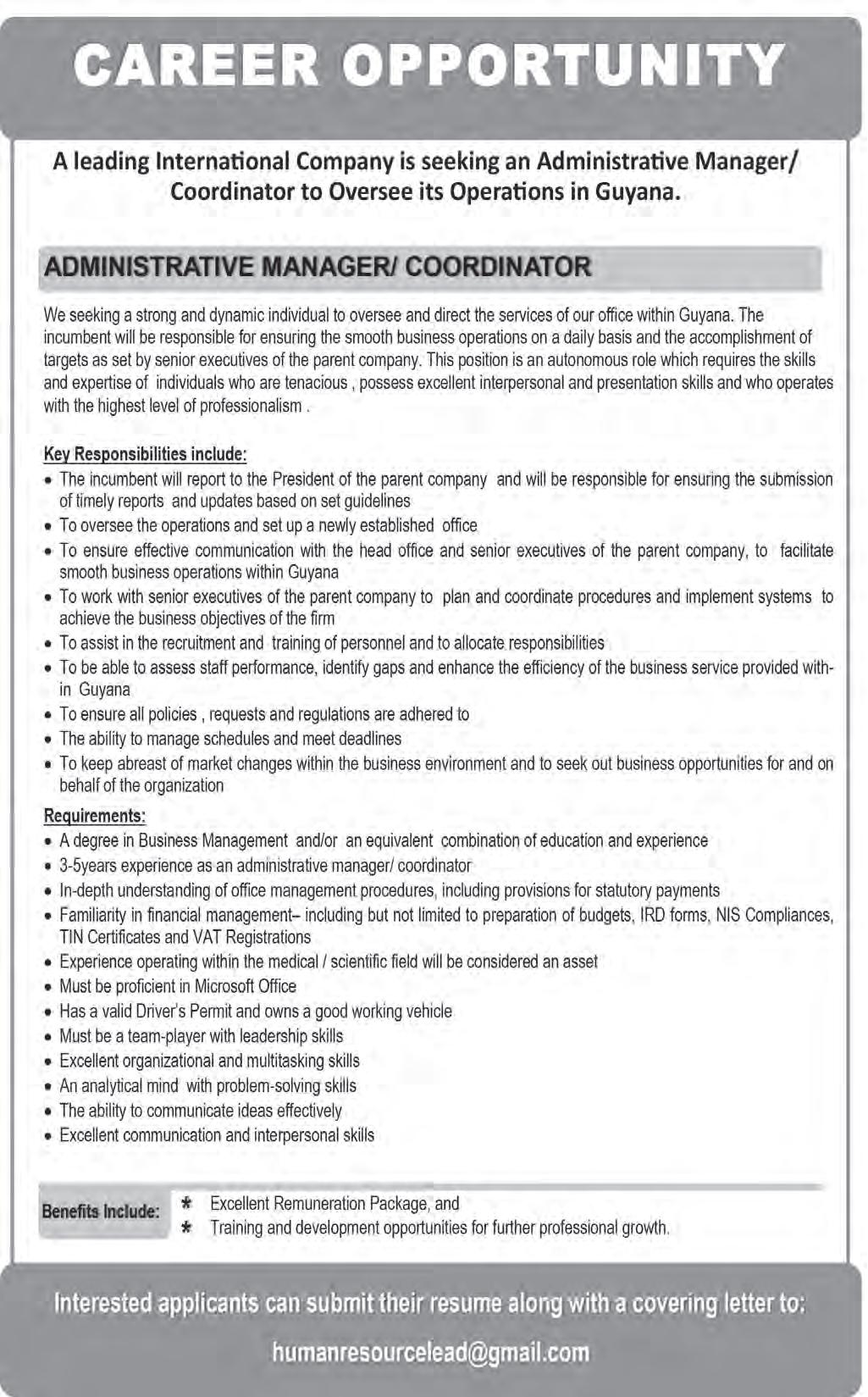
SOCIAL media plays a significant role in our society today. Many people use it to communicate, socialise with friends and family, and stay updated on global news. Personally, I use social media daily and often find myself scrolling through TikTok. However, recently, I realised I needed a break. Last week, I tried to reduce my screen time because I felt my productivity was declining. I avoided certain apps, limited my time on others, and even turned off my phone when necessary. Surprisingly, I was still functioning and alive after my social media break.
We’re all burnt out through various mediums of life, including social media and digital screens. “Digital burnout” isn’t just a catchy phrase; it’s a serious form of burnout that can have psychological and physical impacts on our health. It’s the collective exhaustion of a society that’s always online, always reachable, and
always “just checking one more thing.” The anxiety and stress that follow digital burnout aren’t isolated feelings; many people experience them daily, but they’re often not discussed.
Recent studies suggest that adults spend more than seven hours a day on their digital devices, excluding socialising or work. In hindsight, we spend more time on our phones than engaging with others. T his constant digital stimulation eventually takes a toll on our brains and mental capacities. Some people may become irritable, feel overwhelmed, and their brains may feel “overheated”. As a remedy for digital burnout, the concept of a “tech sabbath” is slowly being introduced. Inspired by traditional sabbaths that promote rest and meditation, “tech sabbaths” encourage individuals to unwind from digital distractions and unplug from all devices for about 24 hours.
FROM PAGE XX
“Tech sabbaths” are meant to reclaim the power over your mind and attention span that technology seemingly took away. It is not an anti-technology approach—it simply means to slow down and refocus on your life for a bit without a digital screen. In my own pers onal experience, I reclaimed my physical strength by doing more physical activities. I was able to physically read the newspapers—not an e-copy. I was able to find new inspiration for my writing through the outdoors —hence this column piece being written— and I was also able to feel like time slowed down for a bit. Our lives are enormously tied to these small screens whether we like that idea or not. As such, it can be difficult to spend time away from a screen because our work, connections, and worldwide updates can all be found in a
device that fits into the palm of our hands. Nevertheless, I urge you all to think of a “tech sabbath” as a way to give your mind rest and peace. Too much of anything can eventually take a toll on our health, and that includes our screen time. You can start small by reducing your time daily fr om 7 hours to 6 hours, and eventually, as time progresses, challenge yourself to a day of tech-free productivity. Just one day—if you—without a screen, just your thoughts and emotions in the open, and your attention refocused on the physicality of life in front of you. The possibilities of what you can accomplish without technology are also endless. After all, many civilisations were built without the use of modern technology. Can you challenge yourself to do the same, even for a day?






































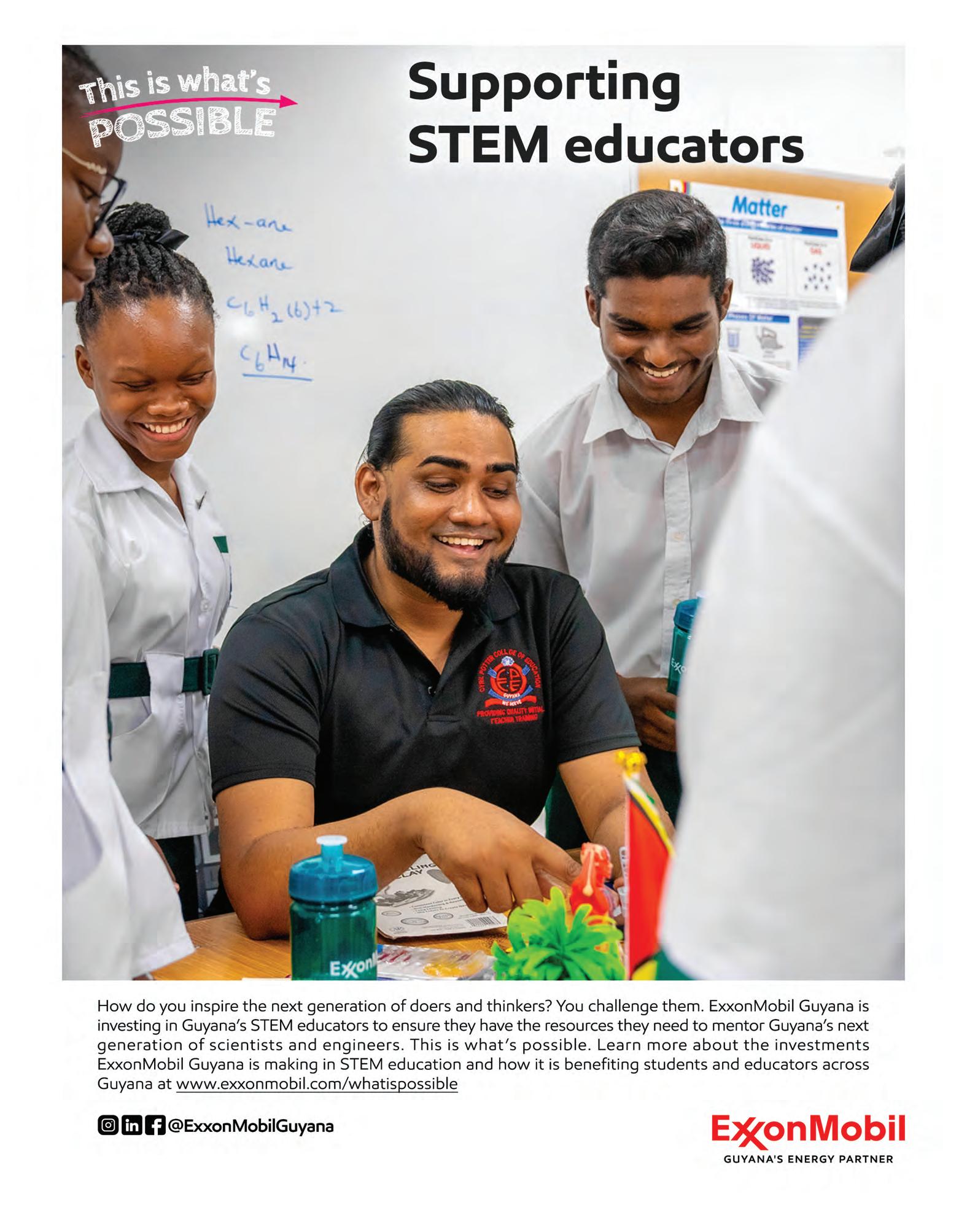


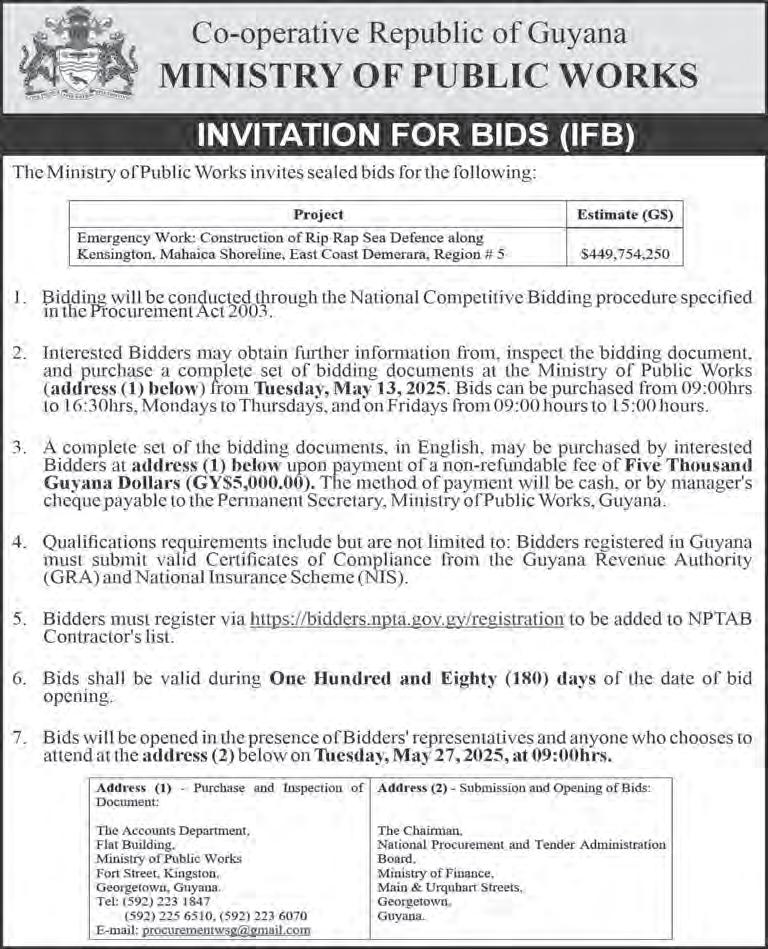

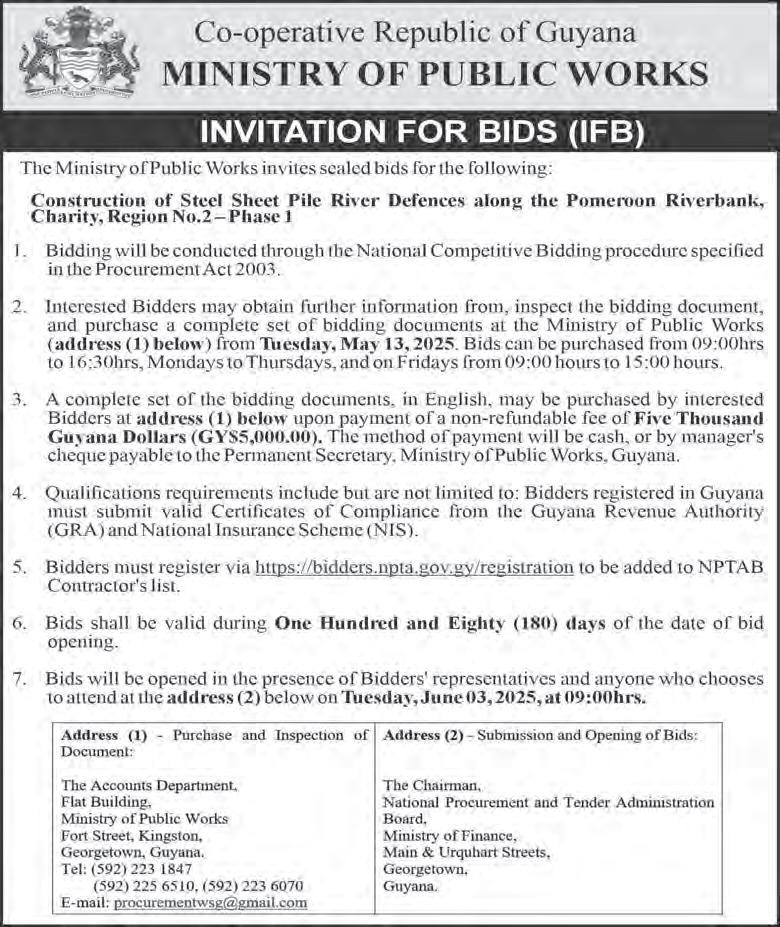











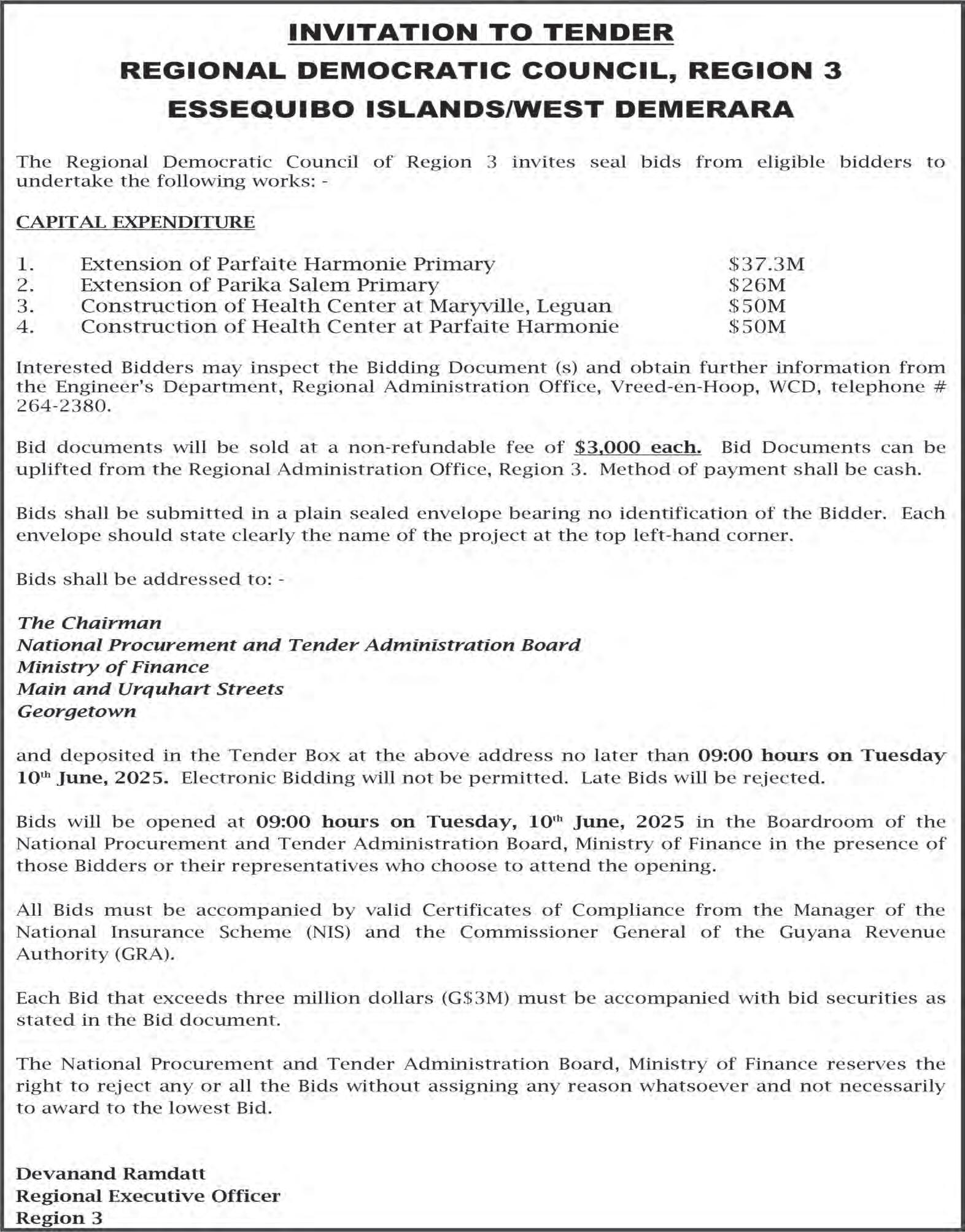


Welcome dear reading friend. The time for showcasing your language prowess is here. But have you been revising well? Have you been placing emphasis on your shaky areas? Your aim should be to excel in all sections of the question papers. Attend to the revision of possible meanings made with sentences, paragraph-
ing, sentence lengths, r esponding to questions, neatness, and such rudimentary things that sometimes cause candidates to lose high scoring. Still keep in touch with a

May 25, 2025
genuine study partner. Be wise.
Love you.
THE PASSAGE
Doing a summary
Read the passage and in a few sentences give a short, crisp version of its contents.
Just before the road from the inn turns and makes for the village, there is a hidden path to the manor. Visitors use the main manor road, crossing through the gatehouse and past the apple trees and the stable. Some of the villagers know about the path, but few use it, for it passes too close to the dark woods. Alyce, in her comings and goings through the village, had come upon the path, although she had never before had need to follow it all the way up to the manor. Until one afternoon, when golden-yellow blossoms first appeared on the laburnum trees and Girtle the cow gave birth to her first calf, a sweet and sticky thing Alyce thought to call Rosebud, for she was as red as the hedgeroses near the village church.
(Karen Cushman’s “The Midwife’s Apprentice”)
THE PASSAGE
Reading comprehension
Re ad the following passage carefully and then respond to all questions set below it.
Not everyone could carry on to fight harder than I did, carried on…
Not everyone, though, could carry on. Some of the men on the hospital ship
To be totally understanding makes one very indulgent. MME DE STAËL (1766-1817) Corinne (1807)
with me didn’t have any visible wounds, but were badly hurt. They had kept going forward until not just their bodies were worn out but their spirits. They hadn’t been physically wounded, but now were unable to do anything. Some just stayed in bed and cried. Some sat up babbling words with no meaning while tearing at their hair and clothing. Others just stared off into space.
The name the armed forces gave to that sickness of the mind and spirit was “battle fatigue.” It was hard for some people to understand, especially those who’d never been in combat. Some even accused those men of being fakers and cowards. But we Navajos understood it well. Our ancestors saw what war does to human beings. When we must fight other humans, injure and kill them, we also injure a part of ourselves. Our spirits become sick from contact with the enemy
Long, long ago, even the Holy People suffered from this. It happened that way after the Sacred Twins were given the Thunder Bow and the Arrows of Lightning by their father, the Sun. Monster Slayer used those arrow s to destroy the monsters that had been
devouring the people… The only terrible beings that even Monster Slayer was unable to kill were those that still attack us all. Those are Poverty, Old Age, and Hunger.
(Joseph Bruchac’s “Code Talker”)
1. According to the passage, give two signs of the sickness caused by combat, that is called “battle fatigue”?
2. Give the meaning of the following wo rds and phrases found in the first and second paragraphs: kept going forward, babbling, armed forces, combat, fakers and cowards, our ancestors.
3 What do you think was hard for some people to understand about the illness, especially those who have never fought a war?
4. Make a case for those persons who accuse experienced men of war as “fakers and cowards”? And do they sound like ‘idlers’?
Explain in your own thoughts?
5. W rite about three aspects from paragraphs 2 and 3, in your o wn words, on what the Navajos understood well about war?
6. What is the one o utcome of humans whose spirits come in contact with the enemy?
7. H as this outcome been only under-

stood in this century? What statement in paragraph 2 goes against that thought?
8 Humans fight other humans, injure and kill them. What three aspects of life has all the fighting of Monster Slayer not yet conquered, that still attack us humans, according to the writer?
THE POEM
Multiple choice practice
Read the poem then answer the items on the basis of what is stated or implied.
What kind of thoughts now, do you carry
In your travels day by day
Are they bright and lofty visions, Or neglected, gone astray?
Matters not how great in fancy, Or what deeds of skill you’ve wrought; Man, though high may be his station, Is no better than his thoughts.
Catch your thoughts and hold them tightly, Let each one an honour be; Purge them, scourge them, burnish brightly, Then in love set each one free.
(“Thoughts” by Myna Viola Wilds)
1. What is the purpose of the poet’s questions in the first stanza?
a) He is inquisitive and wants to know what we are thinking.
b) He very much wants to find out how much we review our thoughts.
c) He is not sure about the loftiness of
our thoughts.
d) He wants to ascertain if our thoughts ha ve been changed overtime.
2. For which reason does the poet use the word “travels” (line 2)? To
a) reveal how adventurous we can be when we travel in our minds.
b) show how often our minds travel on a daily basis.
c) symbolise the different activities we are involved in as a part of life.
d) highlight that we harbour negative thoughts about our travels.
3. The lines “are they bright and lofty visions/or neglected gone astray” (lines 3-4) create the impression that
a) We overthink our decisions on a daily basis.
b) We are easily distracted when we are travelling.
c) We are always thinking about possible acquisitions from life.
d) We have diverse thoughts based upon our personal experiences.
4. What does the word “station” (line 7) most likely refer to?
a) An airport check in point b) The height of a building
c) The amount of room comprising an office
d) The status of a person
5. “catch your thoughts and hold them tightly” (line 9) is an example of
a) metaphor b) irony
c) simile d) repetition
6. The poem’s overall purpose is to
May 25, 2025
a) invite us to examine the thoughts that we have.
b) encourage readers
to take more care about their thoughts.
c) suggest that we give our thoughts freedom. d) challenge us to transform our thoughts.

